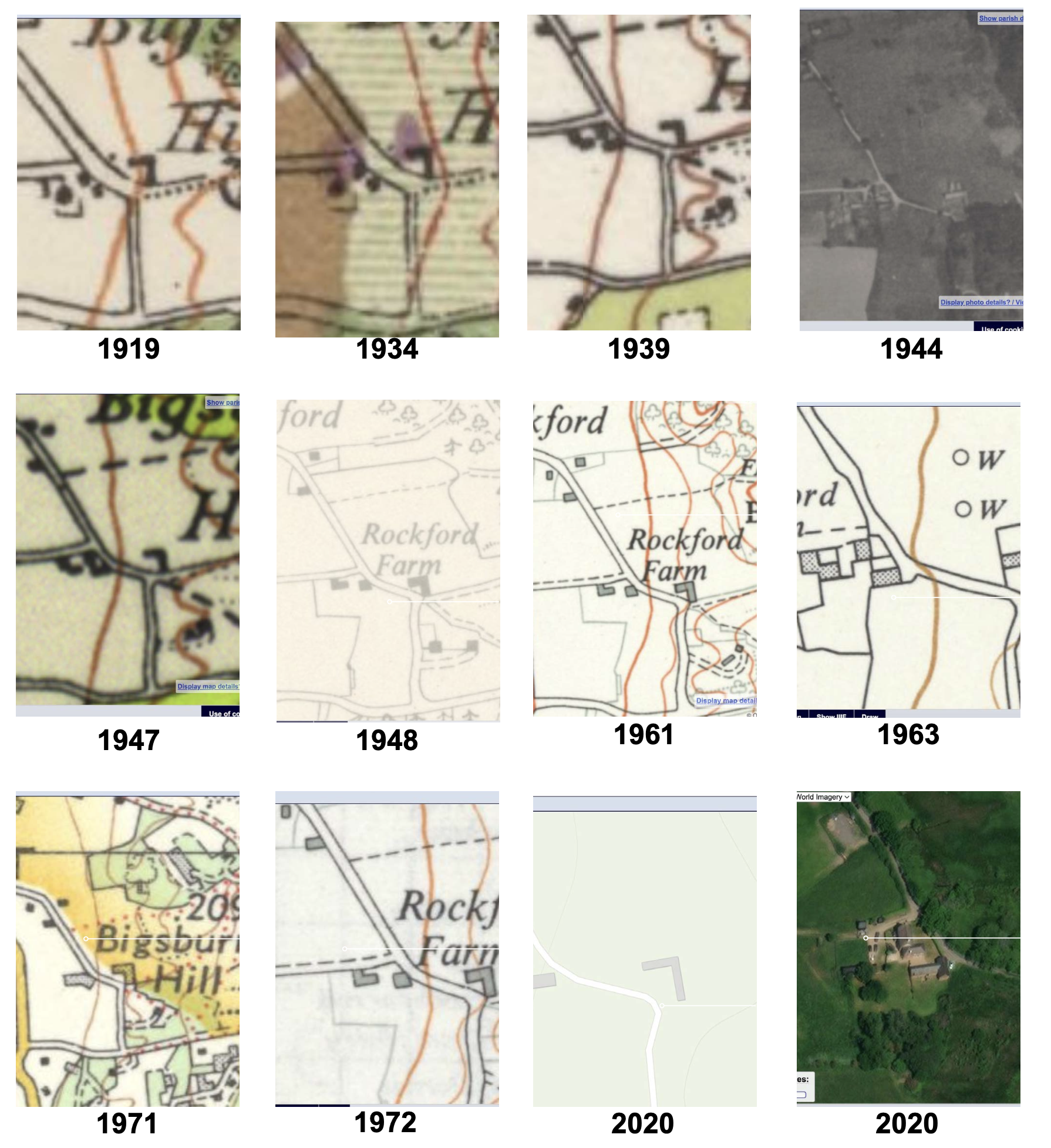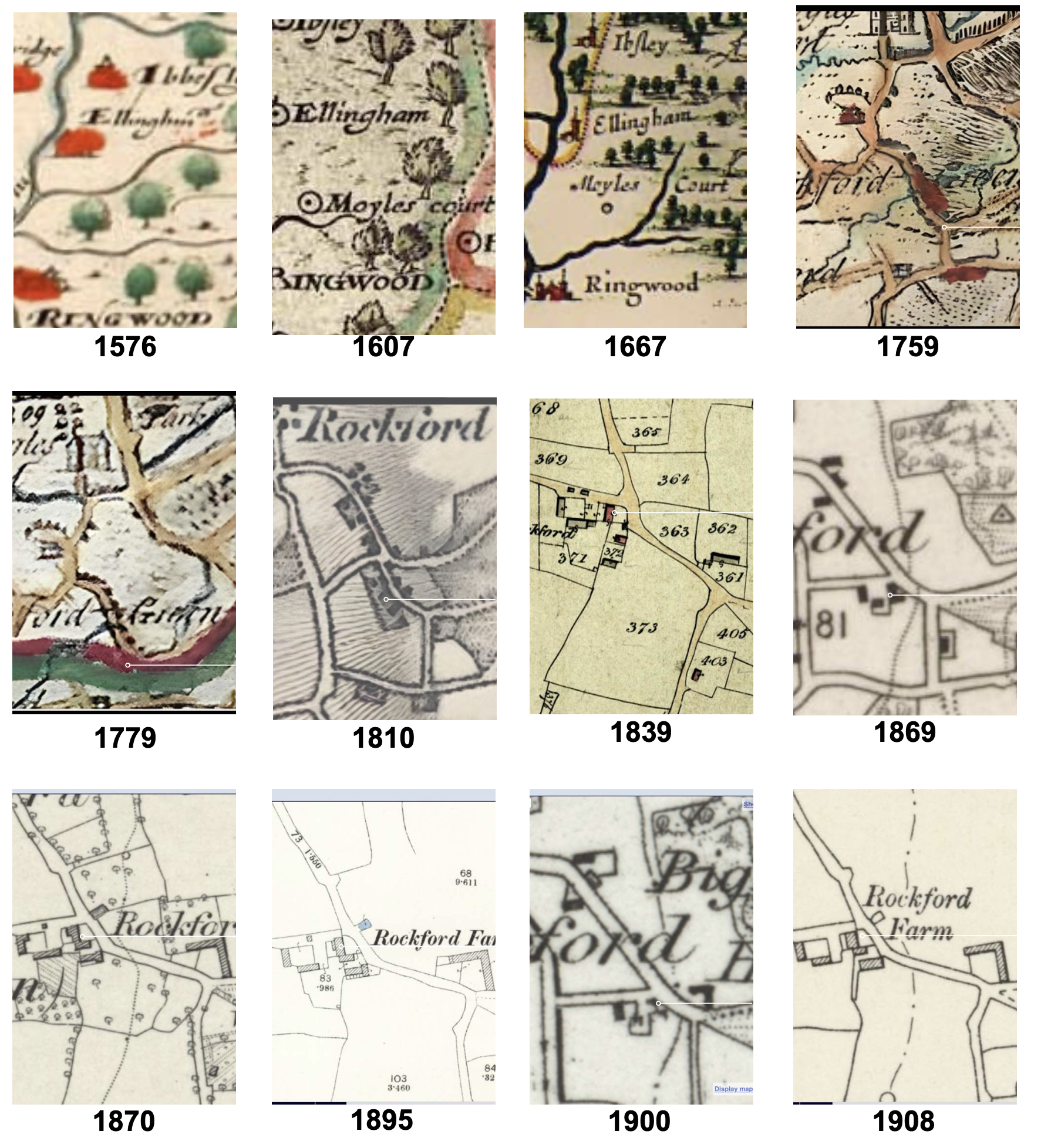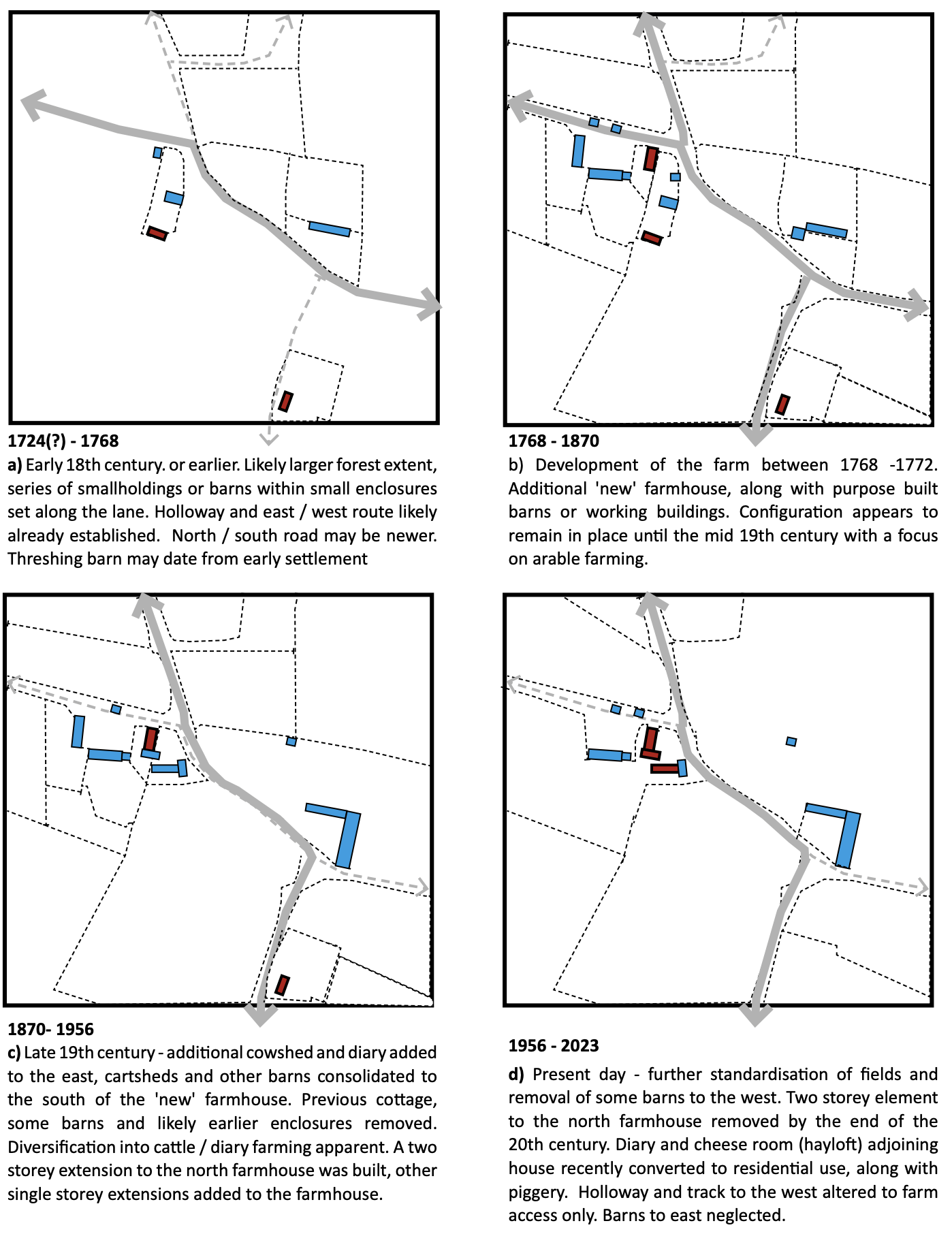Rockford Farm History
In 2024, we commissioned a historical report on the Farm. This is an excerpt of what architect and historian David James Robinson found.
Initial development
The current farm arrangement likely dates from 1768-1772. It is also likely to be located on an older smallholding or 'toft'. Rockford farm was developed in the late 18th century and this period coincides with a period of stability, growth and technological advancement within farming in England. Capital investment into agriculture produced more commercial and organised farms. Initially the area appears to have had a focus on arable farming, with some pastures (grazing) and other food production.
Towards the end of the 19th century there was a diversification to pastoral farming, particularly diary cattle by the Somerly estate.
Development during this time added a number of buildings to the site and altered some field boundaries. The sites wider location in the Avon valley, proximity to the edge of The New Forest and previous owners have all helped to influence the present day arrangement and appearance of Rockford Farm.
The house was redeveloped during the Georgian period with a later extension during the late nineteenth century. The house today has been sympathetically restored by the current owners and the interior is a perfect blend of country living and modern day conveniences.
Ideally located along a quiet lane, the property is accessed through a gate to a drive and parking forecourt. The extensive grounds amount to approximately 10 acres, consisting of sweeping gardens and paddocks and numerous outbuildings including a barn, stable, garage and granary.
The front garden is partly walled, with a graveled courtyard to the side of the house. The remainder of the gardens are nicely laid to lawn, with a patio for outside entertaining, which lead into a small wooded copse. The paddocks are divided into three and are accessed by a five bar gate.
19th century
This century was the zenith of the farm's success and the period represents the two alterations to the farm layout. The site initially appears to have been purpose built to suit arable farming. While some livestock appear to have been kept in its early configuration, the diversification to pastoral farming occurred towards the end of the century only
The farmhouse at Rockford and working buildings clearly represent the 'new' model of farming that began in the late 18th century, but include a few anomalies. It is likely that the layout initially absorbed some earlier working buildings. Even today, agricultural processes often utilise existing or previous structures to suit specific purposes. As a commercial business if buildings could be re purposed or continue to be used this helped the success of the farm. Timber framed buildings also lend themselves to being dismantled or moved. A new yard to the west of the new farmhouse appears to have been built. Around this, a stable and large (likely multi-use) barn was constructed. The stable may pre date this development as, along with the threshing barn, exhibit older detailing and construction techniques. This is explored in more detail on separate pages. From map evidence other buildings existed, but were demolished in the mid / late part of the century.



